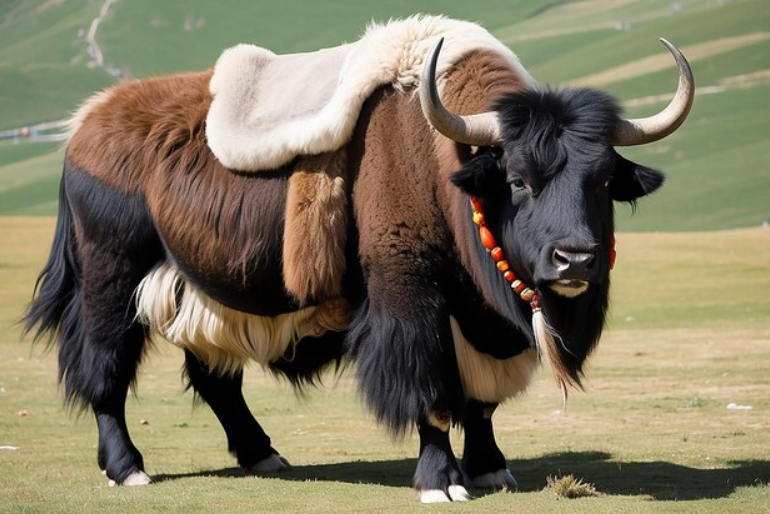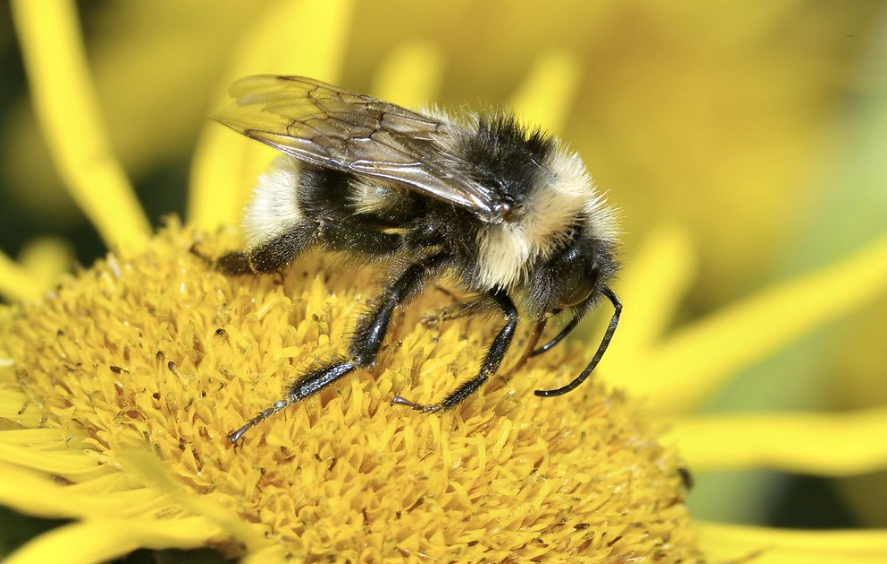
Yak: The Magnificent and Multipurpose Mountain Animal
Bos grunniens, the formal name for the yak, is a big, domesticated animal that is indigenous to areas of Central Asia, the Tibetan Plateau, and the rocky highlands of the Himalayas. Yaks are known for their resilience and have evolved to live in some of the harshest habitats on the planet. The yak is more than simply an animal; it is a representation of the tenacity and resourcefulness of the mountain peoples of the Himalayas due to its thick fur, strong physique, and significant cultural and economic significance. The physical traits, habitat, domestication, uses, and cultural importance of the yak are given below:
What is a yak?
One kind of bovine that is a member of the Bos genus is the yak. Yaks are renowned for their remarkable physical attributes, which include a thick coat of fur, large horns, and a powerful physique that allows them to survive in harsh climates at high elevations. The wild yak (Bos mutus) and the domesticated yak (Bos grunniens) are the two main varieties of yaks; the latter is the one that is more often seen. Although farmed yaks are an essential part of the lives of people living in mountainous regions such as Tibet, Nepal, Bhutan, and portions of China and India, wild yaks may be found in the isolated sections of the Tibetan Plateau.
Physical Attributes of the Yak
Although they are closely related to cattle, yaks tend to be smaller, have shorter legs, and have a stockier physique. They are well suited to the harsh circumstances found at high elevations, where temperatures may drop to below-freezing levels and oxygen is limited. Yaks are protected from the cold by their long, shaggy hair and thick layer of undercoat. Their hooves are specifically made to handle the rough and uneven terrain of the highlands, and their noses are particularly equipped to filter out dust and chilly air.
Physical Characteristics of the Yak
Adult yaks generally weigh between 300 and 1,200 kilograms (660 and 2,645 pounds), making them huge and strong animals. Although their size might vary based on their nutrition and environment, males are typically bigger than females. Yaks’ long, thick fur is one of its most distinguishing characteristics and a major adaptation to the severe alpine environment. A long, coarse outer coat and a soft, insulating undercoat make up this thick coat of fur. Yaks can withstand temperatures as low as -40°C (-40°F) because of the undercoat’s thermal protection.
Yak’s Horns and Eye Structure
Another characteristic that makes a yak unique is its horns. Yaks have horns; however, the males tend to have bigger, more curled horns than the females. These horns are utilised for self-defence, mating rituals, and territorial displays. Since vision is often poor in high-altitude areas, the yak’s wide, black eyes enable it to traverse these poorly lit situations.

Yak’s Ability to Navigate Rough Terrain
Yaks are very nimble despite their size, particularly in their natural mountainous environments. They can easily navigate rough and hilly terrain because of their wide, cloven hooves. Yaks have been domesticated in some of the world’s most isolated areas due in part to their ability to navigate difficult terrain where other animals would find it difficult.
Yak’s Distribution and Habitat
The chilly, high-altitude areas of the Tibetan Plateau and the Himalayas are the yak’s native environment. These regions are unsuitable for the majority of other species because of their low temperatures, sparse flora, and thin air. Yaks, however, have adapted to live well in these environments. Although some may be found considerably higher, they are most often found between 3,000 and 6,000 meters (9,800 and 19,700 feet) above sea level.
Regions Where Yaks Are Found
The northern Indian subcontinent, which includes Tibet, Nepal, Bhutan, and portions of northern India, is home to the majority of yaks. They may be found in Qinghai, Sichuan, and the Tibet Autonomous Region of China; lesser numbers can also be found in Mongolia and certain areas of Kazakhstan. In the highest regions of the Tibetan Plateau, wild yaks often reside in more isolated, deserted places where they wander the wide grasslands and graze on the limited flora./p>
Domesticated Yaks in the Himalayan Regions
On the other hand, domesticated yaks are grown by local residents and are adapted to life in the mountains. Local herders utilise these animals to carry commodities, provide meat and milk, and produce wool for textiles. At elevations between 2,500 meters (8,200 feet) and 4,000 meters (13,100 feet), where the climate is still severe but tolerable for the animals and their human carers, they are usually housed.
The Domestication of Yaks
Since they were originally tamed more than 5,000 years ago, yaks have been an integral part of the lives of those who live in high-altitude areas. Pastoral groups usually keep domesticated yaks in herds, using them as their main source of clothing, food, and transportation. By enabling humans to move cargo, herd animals, and go about their everyday lives in some of the most hostile conditions on the planet, the domestication of the yak transformed life in the Himalayan areas.
Physical Adaptations of Domesticated Yaks
Yaks are less likely to be overbred than other domesticated animals, which preserves their resilience and genetic variety. Although domesticated yaks are usually smaller than their wild counterparts, they nonetheless retain numerous traits that make them ideal for surviving at high elevations.
Different Varieties of Domesticated Yaks
The domesticated yak has changed throughout time to meet the demands of its human carers. Various varieties have been created for a variety of uses, including as pack animals, milk production, and wool harvesting. While some yaks are valued for their meat or milk, others are kept especially for their strength and stamina./p>
Applications of Yaks
Yaks are very adaptable creatures that provide their dependents a variety of resources. Since their milk is nutrient-dense and can be turned into cheese, yoghurt, and butter, it is an essential part of many highland populations’ diets. Because yak milk is far fatter than cow milk, it is especially helpful in areas with high energy demands and limited food supplies.
Uses of Yak Meat
Yaks supply lean, flavourful meat that is often utilised in soups, stews, and other traditional meals in addition to their milk. In various regions of the globe, yak meat is valued for its rich flavour and delicate texture, making it a delicacy. Another major resource is yak wool, which is used to create fabrics and warm clothing. The wool is perfect for use in garments for tough alpine situations since it is soft, lightweight, and very insulating.
Yaks as Pack Animals
In many mountainous areas, yaks are also vital pack animals. Yaks are utilised to transport anything from food and water to building supplies and firewood because of their strength, stamina, and ability to manoeuvre across steep and rocky terrain. In places where roads are either nonexistent or inaccessible, their function in transportation has been particularly significant.

Yaks in Tibetan Culture
Yaks are used for utilitarian purposes, but for many Himalayan cultures, they also represent cultural identity. Theyhave a significant role in Tibetan culture and religion, and they are used in several customary rites and festivals. In Tibetan art, yaks are often shown as symbols of fortitude and perseverance in the face of hardship.
Preservation of Wild Yaks
Yaks are considered “vulnerable” by the International Union for Conservation of Nature (IUCN), despite the fact that farmed yaks are common in the Himalayan area. Poaching, competition from domesticated cattle, and habitat degradation have all put the wild yak population in jeopardy. While cultivated yaks are sometimes let to graze in the same places as wild yaks, which may result in resource depletion and environmental damage, wild yaks are often shot for their meat and fur.
Conservation Efforts for Wild Yaks
To save wild yaks and their habitats, conservation measures are being taken. These initiatives include creating protected areas, enforcing hunting laws, and encouraging domesticated yaks to graze sustainably. The objective is to preserve the fragile balance of the high-altitude ecosystems that yaks live in while ensuring that both wild and farmed yaks continue to flourish in their native habitats.


